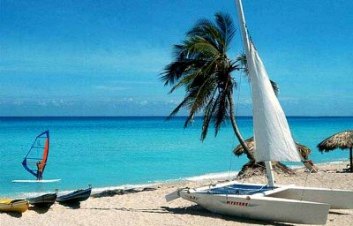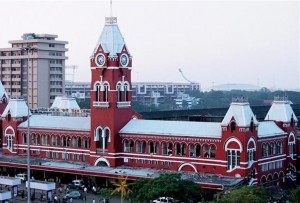 Tamil Nadu constitutes the south-eastern extremity of the Indian peninsula. Chennai is the capital city of the State, besides being an important district. The district city is one of the metropolis of India and serves as the gateway of the culture of South India. In spite of being the capital of a Tamil speaking State, it has emerged as a multi-ethnic city playing an important role in the historical, cultural and intellectual development of India, representing still the distinct components of the highest form of Dravidian civilisation. In addition, it holds out an interesting fare of South Indian architecture, music, dance, drama, statue and other arts and crafts.
Tamil Nadu constitutes the south-eastern extremity of the Indian peninsula. Chennai is the capital city of the State, besides being an important district. The district city is one of the metropolis of India and serves as the gateway of the culture of South India. In spite of being the capital of a Tamil speaking State, it has emerged as a multi-ethnic city playing an important role in the historical, cultural and intellectual development of India, representing still the distinct components of the highest form of Dravidian civilisation. In addition, it holds out an interesting fare of South Indian architecture, music, dance, drama, statue and other arts and crafts.
Chennai is situated on the north-east end of Tamil Nadu on the shoreline of Bay of Bengal. It stretches nearly 25.60 kms. along the Bay coast from Thiruvanmiyur in the south to Thiruvottiyur in the north and runs inland in a rocky semi-circular fashion. It is bounded on the east by the Bay of Bengal and on the remaining three sides by Chengalpattu and Thiruvallur Districts.The city of Chennai came into being due to a strategic necessity and historical accident. It symbolises the rise of British power in South India by setting up and consolidation of the East India Company in the seventeenth century with its headquarters at Fort St. George as a trading centre. Within 350 years, a few sprinkled villages (important being Mylapore, Triplicane and Chennai Patnam) have developed into a modern metropolitan city without shedding its traditional customs, religious outlook and other traditions. It can be proudly remarked that the greatness of ancient Chennai is mostly religious due to the preservation of the old famous Saivaite and Vaishnavite shrines signifying the antiquity of the place. The growth of the city is significant and closely linked with the development of British Institutions and administration. In short, Chennai city was the chief centre from which the British rule expanded in the sub-continent and it remains a standing monument of British contribution to India. Chennai city has acted as an important centre of culture and education in South India and has been the cradle of many movements which have played an important role in the history of the sub-continent. A large number of institutions which are known in India and abroad are found located in the city, of which mention may be made of the Theosophical Society, the Kalakshetra and colleges of Arts and Crafts. The establishment of professional colleges like Medical, Veterinary, Law and Teaching, the location of the IndianInstitute of Technology and the establishment of Central Leather Research Institute have added to the development of the city. Chennai is one of the leading cities in India today from the point of view of trade and commerce, with the fourth largest port in the country and the first to have developed a full-fledged container terminal to international standards. The port is providing trade links with Japan, Singapore, Malaysia, Burma, Bangladesh, Ceylon and other far eastern countries. Chennai is also one of the most important industrial cities of the sub-continent. As a district of the State it ranks third after Coimbatore and Salem in so far as the number of factories is concerned but stands at the top in case of employment and productive capital and first in revenue. It, however, ranks second in terms of industrial out-put next to Chengalpattu. Chennai city enjoys an eminent position in the country in film industry and Kodambakkam, known as the Hollywood of Chennai, has a number of studios engaged in the production of Tamil, Telugu, Kannada, Malayalam, and Hindi movies which are quite popular. Total area of the district is 178.20 sq. kms.
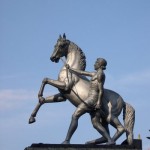 The city of Madras has now been renamed as Chennai. It is stated that the name Chennai traced its origin to “some other language”. The rechristening of the city is part of the steps announced for the “growth of Tamil in various fields”. There are different versions about the name of this once sleepy coastal village. When the British landed here in 1639 A.D. it was said to be part of the empire of the Raja of Chandragiri. The British named it Chennapattinam, after they acquired it from Chennappa Nayakar. Gradually, it became Chennai. The first instance of the use of the name Chennai is said to be in the Vestiges of Old Chennai, the sale deed of August 1639 to Francis Day, an agent for the British. There it has been referred to as Chennaipatnam. The British are said to have built Fort Saint George, the present seat of power, in 1640. It was named after the patron saint of England. The Vestiges of Old Chennai infer that the original village of Madraspatnam lay north of the proximate to Chennapattinam. In course of time and with rapid growth, the two virtually became one. It is also inferred that the English preferred the name Madraspatnam, while Indians chose Chennapattinam.
The city of Madras has now been renamed as Chennai. It is stated that the name Chennai traced its origin to “some other language”. The rechristening of the city is part of the steps announced for the “growth of Tamil in various fields”. There are different versions about the name of this once sleepy coastal village. When the British landed here in 1639 A.D. it was said to be part of the empire of the Raja of Chandragiri. The British named it Chennapattinam, after they acquired it from Chennappa Nayakar. Gradually, it became Chennai. The first instance of the use of the name Chennai is said to be in the Vestiges of Old Chennai, the sale deed of August 1639 to Francis Day, an agent for the British. There it has been referred to as Chennaipatnam. The British are said to have built Fort Saint George, the present seat of power, in 1640. It was named after the patron saint of England. The Vestiges of Old Chennai infer that the original village of Madraspatnam lay north of the proximate to Chennapattinam. In course of time and with rapid growth, the two virtually became one. It is also inferred that the English preferred the name Madraspatnam, while Indians chose Chennapattinam.
History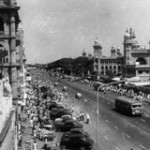
Chennai, originally known as Madras Patnam, was located in the province of Tondaimandalam, an area lying between Pennar river of Nellore and the Pennar river of Cuddalore. The capital of the province was Kancheepuram. Tondaimandalam was ruled in the 2nd century A.D. by Tondaiman Ilam Tiraiyan, who was a representative of the Chola family at Kanchipuram. It is believed that Ilam Tiraiyan must have subdued Kurumbas, the original inhabitants of the region and established his rule over Tondaimandalam.Subsequent to Ilam Tiraiyan, the region seemed to have been ruled by the Chola Prince Ilam Killi.The Chola occupation of Tondaimandalam was put to an end by the Andhra Satavahana incursions from the north under their King Pulumayi II. They appointed chieftains to look after the Kancheepuram region. Bappaswami, who is considered as the first Pallava to rule from Kancheepuram, was himself a chieftain (of the tract round) at Kancheepuram under the Satavahana empire in the beginning of the 3rd century A.D., The Pallavas who had so far been merely viceroys, became independent rulers of Kancheepuram and its surrounding areas.
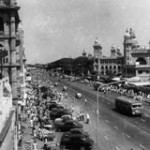 Pallavas held sway over this region from the beginning of the 3rd century A.D.to the closing years of the 9th century except for the interval of some decades when the region was under Kalabharas. Pallavas were defeated by the Chola under Aditya-I by about 879 A.D. and the region was brought under Chola rule.Pandyas under Jatavarman Sundara Pandya rose to power and the region was brought under Pandya rule by putting an end to Chola supremacy in 1264 A.D.Pandya’s rule over this region lasted a little over half a century followed by Bahmini kingdom with the extension of Delhi Sultanate under Khilji dynasty especially under the rule of Alauddin Khilji, a pioneer of all revenue works. During 1361, Kumara Kampana II, the son of Vijayanagar King, Bukka I conquered and established Vijayanagar rule in Tondaimandalam.The Vijayanagar rulers appointed chieftain known as Nayaks who ruled over the different regions of the province almost independently.Damarla Venkatapathy Nayak, an influential chieftain under Venkata III, who was in-charge of the area of present Chennai city, gave the grant of a piece of land lying between the river Cooum almost at the point it enters the sea and another river known as Egmore river to the English in 1639. On this piece of waste land was founded the Fort St. George exactly for business considerations. In honour of Chennappa Nayak, father of Venkatapathy Nayak, who controlled the entire coastal country from Pulicat in the north to the Portuguese settlement of Santhome, the settlement which had grown up around Fort St. George was named after Chennapatanam.The older area called the Madraspatnam lay to the north of it. Later on, the intervening space between the older northern site of Madraspatnam came to be quickly built over with houses of the new settlers (as the two expanded) and that the two villages became virtually one town. While the official centre of the settlement was designated Fort St. George, the British applied the name Madras Patnam to the combined town. Golkonda forces under General Mir Jumla conquered Madras in 1646 and brought Chennai and its immediate surroundings under his control. On the fall of Golkonda in 1687, the region came under the rule of the Mughal Emperors of Delhi.
Pallavas held sway over this region from the beginning of the 3rd century A.D.to the closing years of the 9th century except for the interval of some decades when the region was under Kalabharas. Pallavas were defeated by the Chola under Aditya-I by about 879 A.D. and the region was brought under Chola rule.Pandyas under Jatavarman Sundara Pandya rose to power and the region was brought under Pandya rule by putting an end to Chola supremacy in 1264 A.D.Pandya’s rule over this region lasted a little over half a century followed by Bahmini kingdom with the extension of Delhi Sultanate under Khilji dynasty especially under the rule of Alauddin Khilji, a pioneer of all revenue works. During 1361, Kumara Kampana II, the son of Vijayanagar King, Bukka I conquered and established Vijayanagar rule in Tondaimandalam.The Vijayanagar rulers appointed chieftain known as Nayaks who ruled over the different regions of the province almost independently.Damarla Venkatapathy Nayak, an influential chieftain under Venkata III, who was in-charge of the area of present Chennai city, gave the grant of a piece of land lying between the river Cooum almost at the point it enters the sea and another river known as Egmore river to the English in 1639. On this piece of waste land was founded the Fort St. George exactly for business considerations. In honour of Chennappa Nayak, father of Venkatapathy Nayak, who controlled the entire coastal country from Pulicat in the north to the Portuguese settlement of Santhome, the settlement which had grown up around Fort St. George was named after Chennapatanam.The older area called the Madraspatnam lay to the north of it. Later on, the intervening space between the older northern site of Madraspatnam came to be quickly built over with houses of the new settlers (as the two expanded) and that the two villages became virtually one town. While the official centre of the settlement was designated Fort St. George, the British applied the name Madras Patnam to the combined town. Golkonda forces under General Mir Jumla conquered Madras in 1646 and brought Chennai and its immediate surroundings under his control. On the fall of Golkonda in 1687, the region came under the rule of the Mughal Emperors of Delhi.
Places of Interest
Kalakshetra
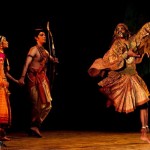 Kalakshetra is a cultural academy dedicated to the preservation of traditional values in Indian art, especially in the field of Bharatanatyam dance and Gandharvaveda music. The academy was founded in January 1936 by Rukmini Devi Arundale. Under Arundale’s guidance the institution achieved national and international recognition for its unique style and perfection. In 1962, Kalakshetra moved to a new campus in Besant Nagar, Chennai, India.
Kalakshetra is a cultural academy dedicated to the preservation of traditional values in Indian art, especially in the field of Bharatanatyam dance and Gandharvaveda music. The academy was founded in January 1936 by Rukmini Devi Arundale. Under Arundale’s guidance the institution achieved national and international recognition for its unique style and perfection. In 1962, Kalakshetra moved to a new campus in Besant Nagar, Chennai, India.
In 1993, an Act of the Indian Parliament recognised the Kalakshetra Foundation as an Institution of National Importance.Kalakshetra literally means a holy place of arts (Kala : Arts, Kshetra : Field
or Holy place). The name Kalakshetra was suggested by Pandit S. Subramania Sastri, a Sanskrit scholar and member of the academy. Deriving inspiration from this noble ideal, Kalakshetra was established, in the words of Rukmini Devi, “with the sole purpose of resuscitating in modern India recognition of the priceless artistic traditions of our country and of imparting to the young the true spirit of Art, devoid of vulgarity and commercialism.” The training of young and talented people by masters of art, with the background of a religious spirit, has been its main aim.
Birla Planetarium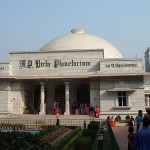
Birla Planetarium features a fully computerized planetarium located in the Kotturpuram suburbs of Chennai city. The planetarium is an integral part of Periyar Science and Technology Centre, a premier institute in the southern state of India, Tamil Nadu. Birla Planetarium is situated on the Gandhi Mandapam Road with the nearest bus stop and railway station being Kotturpuram Bus Stop and Kotturpuram Railway Station. The bus station is about two kms north of the planetarium and the railway station about a kilometre in the north-east.Birla Planetarium is a fully computerized planetarium featuring an audio video sojourn of the cosmic space. The planetarium started as a project in the year1988 and the establishment responsible for its inception was the famous Periyar Science and Technology Centre of Chennai. The planetarium was built in the memory of the leading industrialist and visionary of India, B.M. Birla. The planetarium hosts regular shows pertaining to the astronomy. The place, since its inception is a frequently visited place by tourists, students, environmentalists and people inclined to astronomy.
Provided with the state of art technology, the planetarium reproduces the celestial experience down here. The observatory features fully computerized projector and one of sophisticated pieces of technology, that is GM II projector. The audio video shows hosted by the institution elucidate comprehensive knowledge as well as personal experience of various cosmic phenomena. The planetarium provides an air conditioned complex with seating capacity for 236 persons at any given time. The complex also houses a sound studio, seminar hall and a class room. These places are provided for various interactions and discourses that are offered by the science centre. The popular exhibits of the centre include Solar System, Cycle of Stars, Sky and Seasons, Comets, Man on the Moon. If you are interested in catching the stars or have a look at the meteoroids then make it sure to visit the place on second Saturday of the week. The show featuring night watching is held between 7 p.m. to 9 p.m.
Bharathiyar Illam
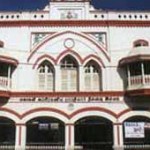 The Bharathiyar Illam was the residence of one of the great freedom fighter and cherished poets, Subramanya Bharathi who made his mark through his evergreen poems which contained a soul-stirring depiction of the various aspects of life.Subramanya Bharathi was born in 1882 in Ettyapuram, situated at a distance of approximately 200 kilometers from the city of Chennai. He was so adept at what he did that he was only seven when he wrote his first poem. It so happened that at the Bharathiyar Illam of Chennai, he spent the later half of his eventful life. This house is located at a place at Triplicane, Chennai.The Bharathiyar Illam in Chennai was later claimed and refurbished by the Tamil Nadu Government in 1993 and opened to spectators later that year on the second day in the month of October.Key Attractions:-
The Bharathiyar Illam was the residence of one of the great freedom fighter and cherished poets, Subramanya Bharathi who made his mark through his evergreen poems which contained a soul-stirring depiction of the various aspects of life.Subramanya Bharathi was born in 1882 in Ettyapuram, situated at a distance of approximately 200 kilometers from the city of Chennai. He was so adept at what he did that he was only seven when he wrote his first poem. It so happened that at the Bharathiyar Illam of Chennai, he spent the later half of his eventful life. This house is located at a place at Triplicane, Chennai.The Bharathiyar Illam in Chennai was later claimed and refurbished by the Tamil Nadu Government in 1993 and opened to spectators later that year on the second day in the month of October.Key Attractions:-
Photographs featuring the versatile poet Subramanya Bharathi himself with his family and friends displays many priceless moments of his life.
Original manuscripts belonging to the poet himself are displayed with great pomp at the Bharathiyar Illam of Chennai.
Letters from the poet addressed to his friend named Nellaiappar.
The chief attention magnet at Bharathiyar Illam in Chennai is theletter from the “Father of the Nation”, Mahatma Gandhi directed towards the great poet on the auspicious occasion of the inauguration of the Bharatiyar Mani Mandapam.
Vivekananda Illam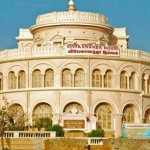
Vivekananda Illam, originally called Ice House, was renamed in 1963 to commomorate Swami Vivekananda’s sojourn here. The museum is a semicircular building facing the marina.This is the first shrine of Sri Ramakrishna Math, Chennai.Swami Vivekananda stayed for 9 days (6th-15th February 1897) at the Illam (then called Ice House/Castle Kernan) on his return from the West.In March 1897, Swami Ramakrishnananda, a brother disciple of Swami Vivekananda, started the first centre of Ramakrishna Math in South India and housed the centre in this very building. The Math functioned here from 1897 to 1906. This place now houses a Pictorial Exhibition on Indian culture from the Vedic Period to the advent of Sri Ramakrishna and a Photo Gallery on the life Swami Vivekananda. The room in which Swamiji stayed is maintained as a meditation room.
Valluvar Kottam
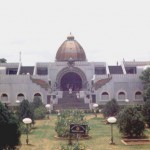 The memorial to the poet-saint Tiruvalluvar is shaped like a temple chariot and is, in fact, the imitation of the temple chariot in Thiruvarur. A life-size statue of the saint has been installed in the chariot which is 33metre tall.
The memorial to the poet-saint Tiruvalluvar is shaped like a temple chariot and is, in fact, the imitation of the temple chariot in Thiruvarur. A life-size statue of the saint has been installed in the chariot which is 33metre tall.
The 133 lessons of his famous work Thirukkural have been depicted in bas-relief in the front hall corridors of the chariot. The auditorium at Valluvar Kottam is the largest in Asia and can lodge about 4000 people. It stands as a modern memorial to the great poet who represents the splendid culture of the Tamils.
Thirukkural, are inscribed on the granite pillars that encircle the auditorium and it has got no pillars for support. There is a 101 ft high temple chariot structure with a life-size image of the poet in it. This chariot is a replica of the temple car of Thiruvarur in Tamil Nadu. The base of the chariot shows in bas-relief the 133 chapters of the Thirukkural. Over 3,000 blocks of stone were used to create this memorial to Tamil culture.The monument stands as a massive auditorium on a dry lake that was filled with the garbage and debris. The auditorium was thrown open to public in the year 1976. The memorial is a revered place in the city as it is considered to bear the impressions of the Tamil culture.The memorial is open for public access on all days, except on Fridays and National Holidays.
MGR Memorial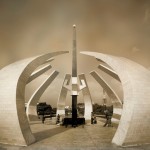
MGR Memorial stands on the Marina beach in memory of the late Chief minister of Tamil Nadu M G Ramachanran and an ever green tamil movie hero in the hearts of Tamilians. This was inagurated by his wife Janaki Ramachandran in May 1990.A lot of memorabilia from his life are kept on display here. These include his dark green car with number plate TMX 4777, the plate, tumbler, telephone set, medals, television from his real life. Also on display from his movies are swords, wooden club, camera, trolley. The Bharat Ratna conferred on him is also on display. A special display is a stuffed lion ( a replica of the lion which acted in Adimai Penn, a super hit block buster)
Theosophical Society
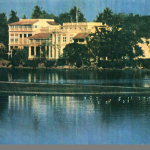 The Theosophical Society was founded by Madame Annie Besant in the year 1875. The spiritual movement was originally formed in America. The society originated from Chennai city and with in a short span of time spread to the whole sub continent and beyond. The society is located along the Adyar River. The primary objective of the society was to revive the Hindu culture that had been badly ravaged by the colonial rule. The campus of the society is replete with forests. Amidst these grounds are located the buildings and popular worshipping places. The key feature of the campus is the presence of a very huge banyan tree. The tree alone covers some 40,000 sq. feets of area. The environs contain a number of residential houses, Hindu Temple, Jain Temple, Church and a Buddhist Temple. The place also provides for a library bearing rich collections of manuscripts on all major faiths and sacred books. The Buddhist shrine contained in the campus is one of the key attractions.
The Theosophical Society was founded by Madame Annie Besant in the year 1875. The spiritual movement was originally formed in America. The society originated from Chennai city and with in a short span of time spread to the whole sub continent and beyond. The society is located along the Adyar River. The primary objective of the society was to revive the Hindu culture that had been badly ravaged by the colonial rule. The campus of the society is replete with forests. Amidst these grounds are located the buildings and popular worshipping places. The key feature of the campus is the presence of a very huge banyan tree. The tree alone covers some 40,000 sq. feets of area. The environs contain a number of residential houses, Hindu Temple, Jain Temple, Church and a Buddhist Temple. The place also provides for a library bearing rich collections of manuscripts on all major faiths and sacred books. The Buddhist shrine contained in the campus is one of the key attractions.
Guindy National Park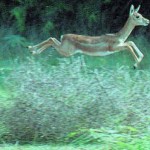
The Guindy National Park, 2.70 sq.KM wide is unique in more ways than one. It has the rarest vegetation type – the tropical dry evergreen vegetation. It is one of the smallest national parks and is situated right in the heart of a metropolitan city – Chennai. But perhaps the best of all is that it has a role in both ex-situ and in-situ conservation.
Guindy National Park is home to 400 black bucks, 2000 spotted deer, 24 jackals, a variety of snakes, geckos, a wide variety of snakes tortoises, geckos and over 100 species of birds, over 60 species of butterflies and spiders each, a wealth of different invertebrates-grasshoppers, ants, termites, carbs, snails, slugs, scorpions, mites, spiders, earthworms, millipedes, etc., These are free-ranging fauna and live with the minimal of interference from human beings. The only major management activity is protection as in other in situ conseration area. The park boasts of over 350 species of plants, and form a natural destination for botanists.
About 22 acres of GNP has been carved out into a zoo for ex-situ conservation. This entails keeping different species in captivity on view to public. Children’s park – the zoo was started with the idea of providing children a natural environment, to educate them about animals and create awareness on conservation. The animals, have bred well in recent years. In children’s park include black buck, sambar, spotted deer, porcupine, hyena, jackal, python, grey pelican, night heron, cormorant, cockatiel, mongoose, bonnet monkey, common langur.
With the aim of spreading awareness, nature camps are conducted for school students taking inside the national park and told of the importance of the bio-diversity found therin. There is also a new interpretation center giving information about the bio diversity found inside the park.
Over 7 lakh visitors come to GNP every year. With the onslaught of development in Chennai. GNP is one of the last strong holds of bio diversity providing peaceful pollution-free atmosphere to many Chennai-ites.
Beaches
Marina Beach
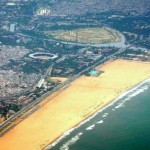 Chennai is famous for its beaches and scenic beauty.Marina beach lies to the east of Chennai (Madras) at Kamarajar Road, 3 Km from the city centre. The fine sandy beach said to be the longest beach in India and one of the longest in Asia, extends to a length of 13 Km, from Fort St. George all the way to Mahabalipuram. There is a drive along the beach fringed with palms and casuarinas running the whole length of Chennai.
Chennai is famous for its beaches and scenic beauty.Marina beach lies to the east of Chennai (Madras) at Kamarajar Road, 3 Km from the city centre. The fine sandy beach said to be the longest beach in India and one of the longest in Asia, extends to a length of 13 Km, from Fort St. George all the way to Mahabalipuram. There is a drive along the beach fringed with palms and casuarinas running the whole length of Chennai.
In early 1880’s, the natural beauty of the beach was enhanced by a facelift given by the then Governor Mountstuart Elphinstone Grant Duff. Some of the most beautiful buildings in Chennai such as the Fort St. George complex established by the East India company in 1641, University of Madras, Senate-House, Chepauk Palace (now P.W.D office), 19th century Presidency College building etc are located on the beach drive.
On the beach itself there is the Anna Park, named after C.N. Anna Durai, the founder of D.M.K (Dravida Munnetta Kazhakam) and a former chief minister of Tamil Nadu. The park is adorned with statues of famous Tamil writers and sages, flanked at either end by memorials of Annadurai and M. G. Ramachandran, a former matinee idol turned the charismatic Chief Minister of Tamil Nadu. Further south there is a swimming pool, an aquarium located opposite to the Presidency college and two splendid bits of sculpture- that of the Victory of Labour and Mahatma Gandhi. At the other end of the beach is the new lighthouse.The aquarium has a collection of tropical sea fishes and fresh water fishes. To the south of the Aquarium is the historic Ice House (1840) (now known as the Vivekananda house) which was used to store ice brought from England and America for 30 years. Later in 1892, it became a home to Swami Vivekananda and the name was changed to Vivekananda house.
The beach can be ideally visited in the early mornings or in the late evenings when the area throbs with activity. Food stalls, hawkers and other entertainers line the beach. The Sunday afternoon market is worth a visit. The large beach is often the venue for important state functions. Kite flying was a common sport and has been banned by the government recently.
with the children at the beach and there are also facilities for pony rides. As the undercurrent is very strong, bathing and swimming can be dangerous, and should be done with utmost care.
Elliots Beaches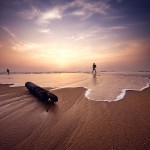
Elliot’s Beach is situated on the Eastern Coastal Plains of India and in the state of Tamil Nadu. The beach lines up the shores of the Chennai, the capital city of Tamil Nadu. The famous Marina Beach in the Chennai city extends further south and gives rise to the Elliot’s Beach. The beach is provided with many attractions that ensure frequent visits by tourists as well the locals residing in the nearby regions. The place makes up a good destiny for people who does not like the hue and cry of the techno city.Elliot’s Beach is known for the its serene atmosphere. The beach as such is the cynosure for the youth as well the foreign tourists looking for a bit of privacy. The beach is lined with food stalls and small shops that cater to the beach visitors. The northern part of the beach sees maximum concentration of the visitors. The southern part, the one away from the Marina Beach is a little filthy.Besides the golden sands and the chill of the water, Elliot’s Beach also houses some popular shrines. The Velankani Church and the Ashtalakshmi Temple make up the popular sites on the beach. Ashtalakshmi temple, Hundreds of people pay homage at these places. These pilgrim places are located on the northern end of the beach.The Schmidt Memorial dedicated to a Dutch sailor, who lost his life while saving a drowning fellow, is one among the many conspicuous landmarks on the famous beach.
Covelong Beach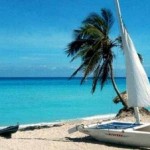
Covelong is a nice beach between Chennai andMahabalipuram (about 40 kms from chennai on the East Coast Road) and a small charming fishing settlement. It was originally a port built by Saadat Ali, Nawab of Carnatic and it was here that the French General Laboudonnais landed his troops in 1746. Later taken by Clive in 1752 and destroyed. The beach is separated from the mainland by the canal running from Chennai to MahabalipuramThe salubrious village of Covelong is renowned for its fishing activities. In the fishing village the swaying palms and the beautiful beach attract people from across the globe. The environs, ambience, peace, tranquility and the infrastructure at the Covelong beach come together to make it one of the most popular beach resorts on the Coromandel Coast. In the yester years Covelong was the renowned port of the Nawabs of the Carnatic. On digging the past it is revealed that Saadat Ali, Nawab of Carnatic, built the ancient port of Covelong.
Kapaleeswarar Temple
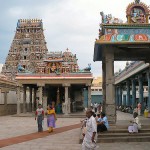 Kapaleeswarar temple is the 24th of the 32 Tevara Stalams in the Tondai region of South India. Tirumayilai is the most centrally situated Shivastalam of the three in (and around) Chennai – Tiruvanmyur, Tirumayilai and Tiruvotriyur.
Kapaleeswarar temple is the 24th of the 32 Tevara Stalams in the Tondai region of South India. Tirumayilai is the most centrally situated Shivastalam of the three in (and around) Chennai – Tiruvanmyur, Tirumayilai and Tiruvotriyur.
Legends: Parvati (Karpakambal) in the form of a peacock, Mayil is said to have worshipped Shiva, hence the name Mylapore. There are several literary works associated with this hoary shrine, which remains today, a seat of Tamil culture. The Poompaavai Patikam composed by Sambandar is associated with this temple & he is said to have brought back to life, Poompavai the daughter of a devotee of Shiva – Sivanesa Chettiar. This event is enacted on the 8th day of the annual festival in the month of Pankuni (Pisces).The Temple: The current temple is a modern structure, built based on the descriptions in the Puranams and the Tevaram; the huge temple tank is the site of the popular Teppam festival in the month of Thai (Capricorn). The Karpakambal shrine in this temple attracts huge crowds on Fridays and on all special occasions. Tirumurai concerts are held regularly here, as are Uzhavaarattiruppanigal in the tradition of Appar. The Singaravelar shrine is where Subramanyar is said to have been given the Velayudham (Spear) by his mother – in a legend similar to that at Sikkal.. A towering Rajagopuram with several stucco images adorns the Eastern entrance to this shrine, where the sanctum faces the West, where the temple tank is located.
Vadapalani Temples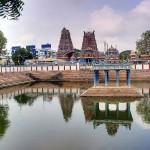
This is a famous Murugan temple at Andavar koil street, Vadapalani Chennai. The temple is more than 125 years old. Palani Andavar (Murugan) being the main deity there are many sannidhis like Varasiddhi Vinayaka, Chokkanathar, Parvati, Kali, Bhairava, Shanmuga with Valli and Devasena, etc in this temple.The moolavar in standing posture resembles the Palani Muruga. The temple has a hall for conducting marriages and religious discourses. There are more than 7000 marriages that happen here each year. There are small sannadhis for Dakshina Murti, Chandikeswar, Mahalakshmi.The entrance to this temple is crowned with a rajagopuram adorned with several stucco images depicting legends from the Skanda puranam. In front of the temple is the temple tank. The eastern tower rises to a height of 40.8 metres. The 108 bharata natyam dance gestures can be seen on the eastern tower as well.Skanda Sashti is celebrated here in the month of Aippasi. Other festivals celebrated here include Panguni Uttiram.
Kandaswamy Temple
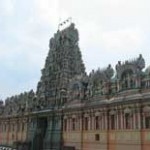 The Kandaswamy temple is situated in Cheyyur, and the nearby town to Cheyyur is Madurantakam. Cheyyur is 29 kms away from Madurantakam. Reaching from Chennai previously called, as Madras to Cheyyur is quite interesting for travel-lovers. You can reach Kandaswamy temple in Cheyyur from Chennai either by bus, rail or road. The nearest railway station to Cheyyur is the Chenglepattu. And from there you can take either taxis or any other luxurious vehicle to Cheyyur. Also from Madurantakam, the nearby town towards Cheyyur you will get private cabs and frequent buses.The origin of the village of Cheyyur where Kandaswamy temple is situated has an ancestral story. The village was built during the reign of Veera Rajendra Chola and Kulothungan-III. With the settlement of the village Cheyyur they built three temples among which the kandaswamy temple is the one. The other two temples are dedicated to Vanmikhanathar i.e. Lord Siva, and the other one to Perumal or (Kariya Manicka Perumal)The Kandaswamy temple is in between the Shiva and Vishnu temples. Lord Kandaswamy or Shiva is the principal shrine of this temple. There are also the shrines of Lord Someswara, Goddess Meenakshi and Muthukumaraswamy, which is also called as Samharamurthy. There are also many other deities like the Vinayaka, Dakshinamurthy and Chandikeswara. You can also see the deity of Murga who is the other son of Lord Shiva. The Murga deity is been standing on five different positions. These five postures are called by distinct names like – Nrutta Skandar (dancing Muruga), Brahma Sastha (created from Brahma), Balaskandar (child Shanmuga), Sivagurunathar (as teacher to Siva) and Pulinthar (vedan hunter).This Kandaswamy temple of Chennai is notable for the outsiders to visit because of the different figures standing in distinct postures. This temple has not only the depictions of deities, which is general feature in the temples. You can get the image of Kazhukundran who had made an artful creation of a temple car in 1521 A.D. It is used during the Skanda Sashti festival.
The Kandaswamy temple is situated in Cheyyur, and the nearby town to Cheyyur is Madurantakam. Cheyyur is 29 kms away from Madurantakam. Reaching from Chennai previously called, as Madras to Cheyyur is quite interesting for travel-lovers. You can reach Kandaswamy temple in Cheyyur from Chennai either by bus, rail or road. The nearest railway station to Cheyyur is the Chenglepattu. And from there you can take either taxis or any other luxurious vehicle to Cheyyur. Also from Madurantakam, the nearby town towards Cheyyur you will get private cabs and frequent buses.The origin of the village of Cheyyur where Kandaswamy temple is situated has an ancestral story. The village was built during the reign of Veera Rajendra Chola and Kulothungan-III. With the settlement of the village Cheyyur they built three temples among which the kandaswamy temple is the one. The other two temples are dedicated to Vanmikhanathar i.e. Lord Siva, and the other one to Perumal or (Kariya Manicka Perumal)The Kandaswamy temple is in between the Shiva and Vishnu temples. Lord Kandaswamy or Shiva is the principal shrine of this temple. There are also the shrines of Lord Someswara, Goddess Meenakshi and Muthukumaraswamy, which is also called as Samharamurthy. There are also many other deities like the Vinayaka, Dakshinamurthy and Chandikeswara. You can also see the deity of Murga who is the other son of Lord Shiva. The Murga deity is been standing on five different positions. These five postures are called by distinct names like – Nrutta Skandar (dancing Muruga), Brahma Sastha (created from Brahma), Balaskandar (child Shanmuga), Sivagurunathar (as teacher to Siva) and Pulinthar (vedan hunter).This Kandaswamy temple of Chennai is notable for the outsiders to visit because of the different figures standing in distinct postures. This temple has not only the depictions of deities, which is general feature in the temples. You can get the image of Kazhukundran who had made an artful creation of a temple car in 1521 A.D. It is used during the Skanda Sashti festival.
How To Reach Chennai
By Air
Chennai serves as a major gateway to southern India, and the Chennai international Airport comprising the Anna international terminal and the Kamaraj domestic terminal with a total passenger movements of 10.5 million and aircraft movements of 110,000 in 2009–2010, is the third busiest airport in India,and has the second busiest cargo terminus in the country. Chennai handles 316 flights a day, again making it at third spot among Indian Airports. The city is connected to major hubs across Asia, Europe, and North America through more than 30 national and international carriers.
The existing airport is undergoing further modernisation and expansion with an addition of 1069.99 acres, and a new greenfield airport is to be constructed at an estimated cost of Rs 20,000 million in sriperumbudur on 4,200 acres (17 km2) of land
By Sea
The city is served by two major ports, The Chennai port is the largest in Bay of Bengal with an annual cargo tonnage of 61.46 million (2010–2011) and is India’s second busiest container hub with an annual container volume of 1.523 million TEUs (2010–2011), handling automobiles, motorcycles and general industrial cargo.The Ennore Port with an annual cargo tonnage of 11.01 million (2010–2011) handles cargo such as coal, ore and other bulk and rock mineral products.
By Rail
Chennai is the headquarters of the southern railways The city has two main railway terminals. Chennai central station, the city’s largest, provides access to other major cities as well as many other smaller towns across India. Chennai Egmore is other station which operates interstate and intra state trains
By Road
Chennai is well connected to other parts of India by road. Four major highway connects Chennai from Mumbai via Bangalore ,Kolkatta via Bhubneshwar
Vans, popularly known as Maxi Cabs and ‘share’ auto rickshaws ply many routes in the city and provide an alternative to buses. Metered call taxis, tourist taxis and auto rickshaws are also available on hire. Chennai’s transportation infrastructure provides coverage and connectivity, but growing use has caused traffic congestion and pollution.
General Facts
State TamilNadu
Language Tamil,English,Telugu
Population 4,681,087
Area 426 km sq
Latitude 11° 00′ N
Longitude 78° 00′ E
Submit your review | |
